Lilac Bush Growing Guide: New Varieties and Care Tips
Updated: Apr. 09, 2024
There's many reasons to love a fragrant lilac bush. See updated varieties of this timeless classic and learn how to take care of them.
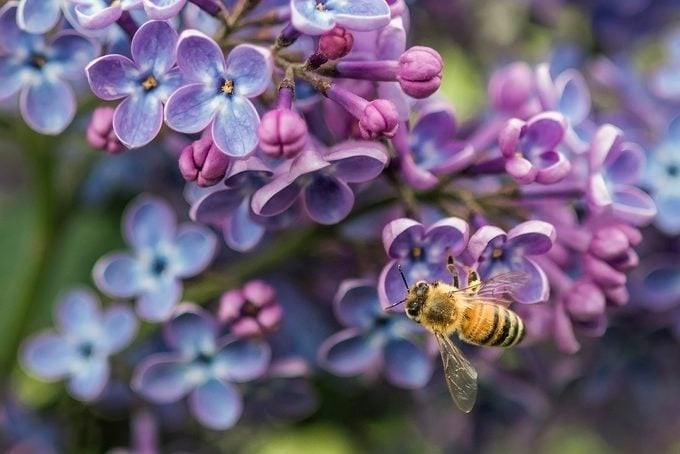
With the first mention of the lilac bush dating back to 1753, it’s not surprising that the fragrant flowers are often considered old-fashioned—but that doesn’t mean lilacs don’t have modern appeal.
“Lilacs decorated the large estates of the founding fathers and have remained an American favorite for generations,” says Melissa Finley, Thain curator of woody plants at New York Botanical Garden. “For contemporary gardeners, lilacs are often associated with fond memories of mothers, grandmothers and aunts who grew these classic shrubs for their showstopping fragrance.”
On This Page
Do Lilacs Prefer Full Sun or Shade?
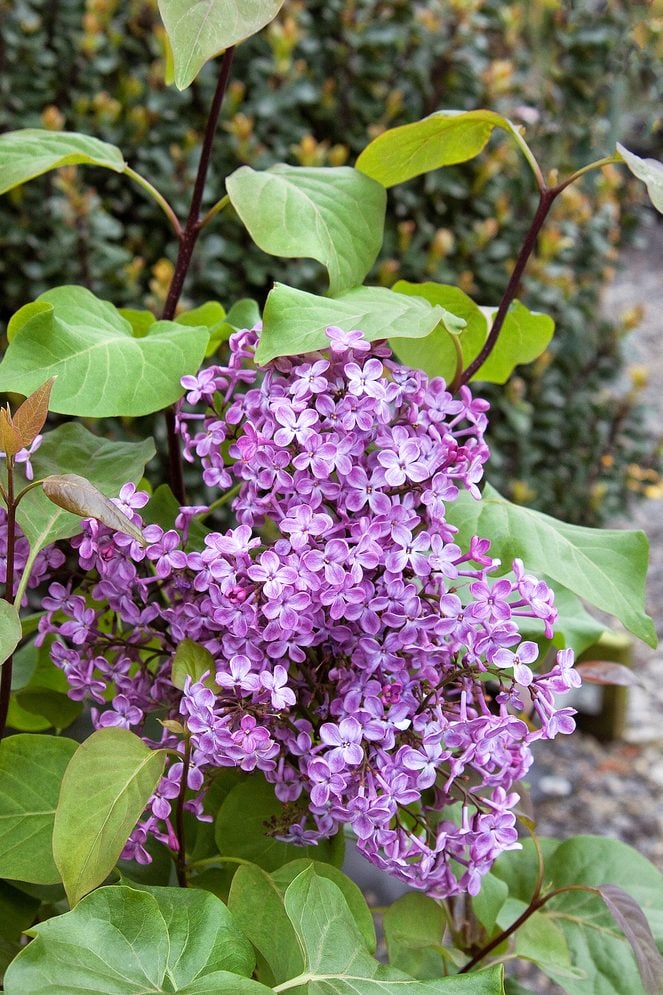
- Common lilac
- Syringa vulgaris
- Zones: 3 to 7
- Attracts: birds, bees, butterflies
- Light needs: Full sun
- Size: 8 to 16 feet high and 6 to 12 feet wide
- Grown for: Gorgeous spring blooms and sweet scent
- Cultivars to try: Yankee Doodle can handle the cold starting in Zone 2; Primrose offers creamy yellowish flowers with a classic lilac aroma; Bloomerang has a second bloom in summer.
Beloved by gardeners for generations, common lilac is a relatively fuss-free shrub that comes to life in late spring. It’ll be quite happy in most soils with good drainage. Though this plant can grow in spots with part shade, being in full sun will produce the best display of its flowers.
Whether you plant classic species like the common lilac bush or newer varieties like Pinktini lilac, choose a site with full sun and moist but well-draining soil; lilacs prefer a neutral or slightly alkaline soil pH. “A lilac in the right spot will require very little care in order to thrive,” Melissa says.
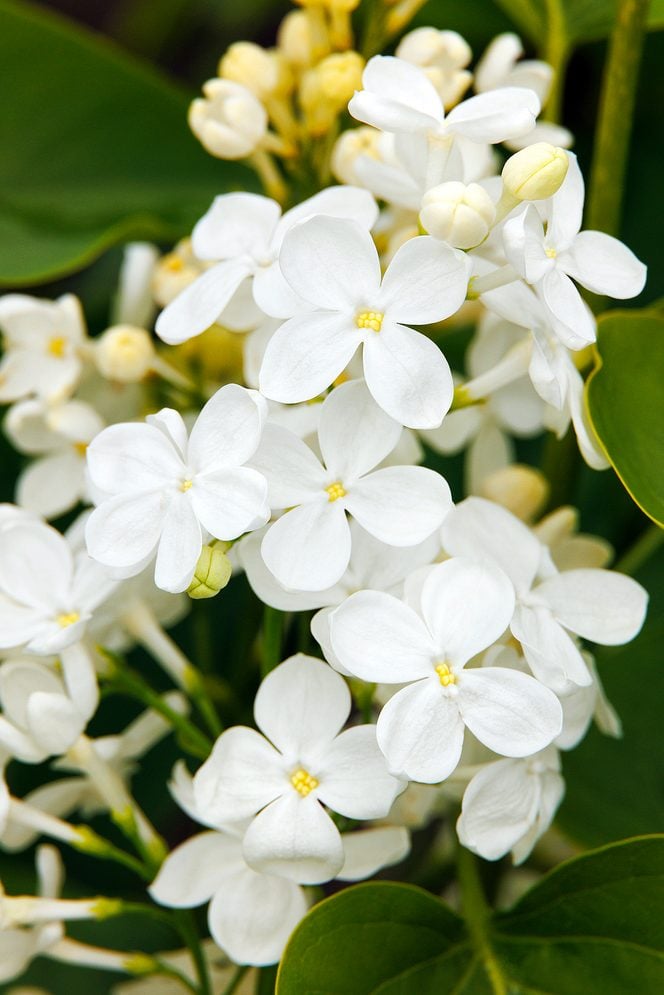
Warmer winter conditions due to climate change could make it harder for traditional early-blooming lilacs to bloom in some areas, Melissa adds. Heat-tolerant varieties like Lilac Sunday, Betsy Ross and Old Glory are better adapted for warmer climates.
Lilac bush not blooming? Here’s what to do.
Grow Lilacs for Their Fragrance
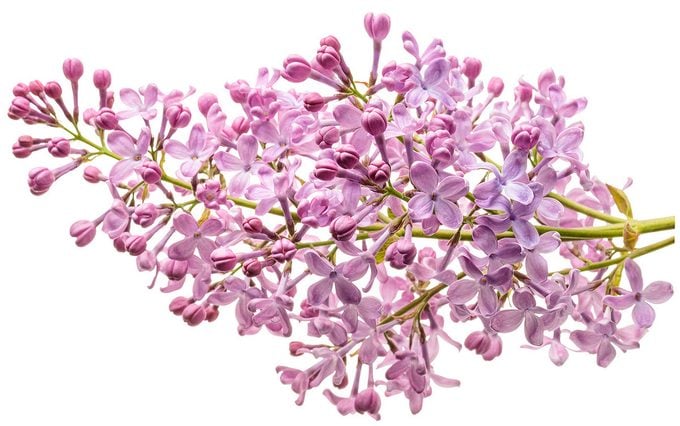
Lilacs are “midseason bloomers,” blooming in April to early June with pyramid-shaped clusters of petite flowers in shades of red, pink, blue, purple, yellow and white, lasting for around two weeks, according to Ruth Wendt, garden committee chair at the Hulda Klager Lilac Gardens. The flowers, though pretty, aren’t the main reason why gardeners love lilacs; their intoxicating scent is the biggest draw.
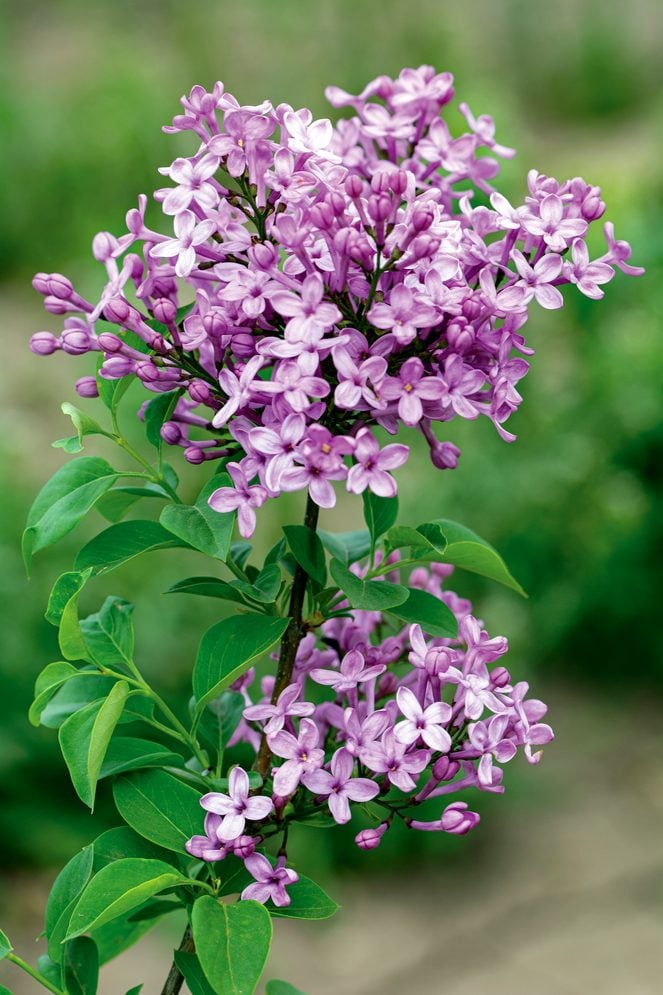
Certain varieties, including Scentara, are even more deeply scented. You won’t be the only one enjoying the inviting, bountiful blooms when they arrive. Wildlife are also attracted to the scent, shape and color of these blooms. Lilacs attract bees, butterflies, hummingbirds and other pollinators, turning the garden into a buzzing, fluttering nectar buffet.
Try New Age White Lilac for a fresh update on a classic shrub.
Look for Reblooming Lilac Varieties
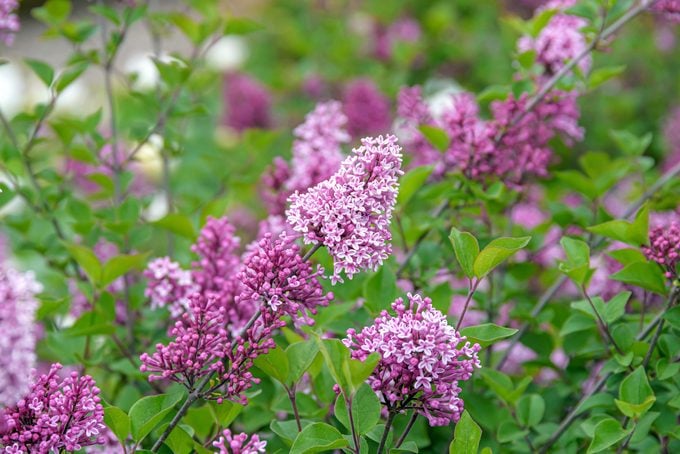
Lilac bush lovers have often planted early-, mid- and late-blooming varieties to extend the appearance of the gorgeous blooms in their gardens. But thanks to new reblooming cultivars, it’s possible to have a second flush of flowers on a single plant.
Look for cultivars like Josee, Colby’s Wishing Star, and the series Bloomerang, which bloom in the spring and again in the late summer or fall. Melissa says subsequent blooms are “usually not as spectacular as the initial bloom,” especially in hot and muggy climates.
Why are my lilac leaves turning brown?
Proper Lilac Pruning Is Essential
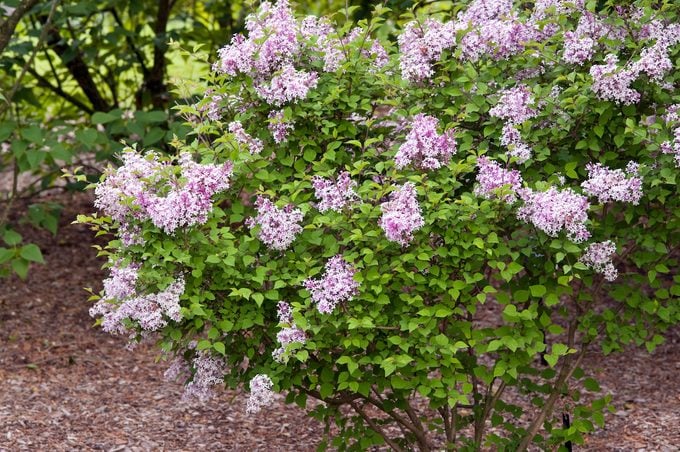
“The most common home gardener mistake with lilacs is pruning at the wrong time of year,” Melissa says. Prune lilacs no more than three weeks after the blooms fade; wait too long, and you’ll prune new growth, eliminating the chance that lilacs will bloom next spring.
Reblooming cultivars require little pruning. Instead, Melissa recommends deadheading the spring blooms before they set seed to encourage a better second flush.
Get more expert tips on how and when to prune lilacs.
Dwarf Lilac Cultivars
Dwarf lilac cultivars make it possible to have the classic blooms in small spaces. Unlike traditional varieties that can grow up to 12 feet tall, these dwarf cultivars have mature sizes ranging from 2 to 6 feet tall. Ruth calls them perfect for patios or other small spaces. Size isn’t the only thing that sets dwarf lilacs apart. Ruth notes that the scent of dwarf lilacs tends to be spicy, not sweet.
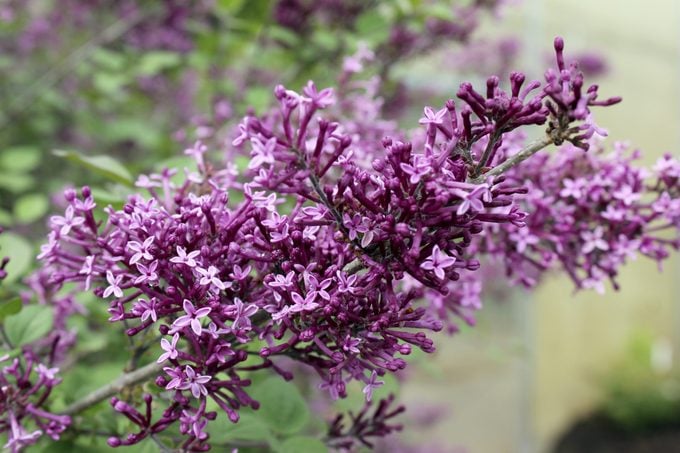
Bloomerang Dark Purple produces diminutive dark purple flowers with a wonderful scent and reblooms from midsummer until frost.
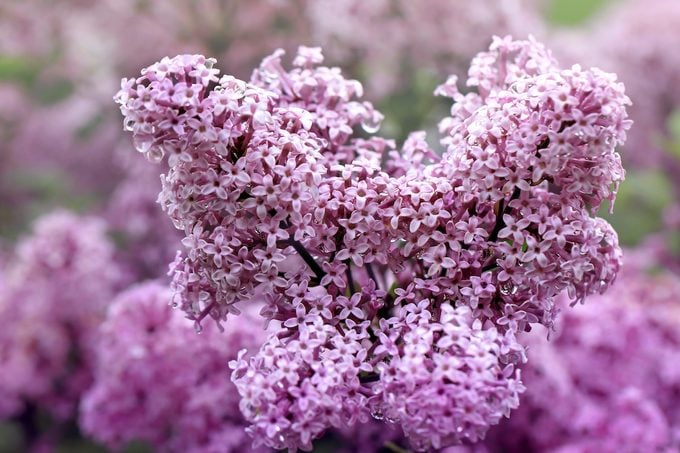
With its pale pink flowers, the award-winning Palibin is dense and grows up to 5 feet tall, making it an ideal choice for a hedge.
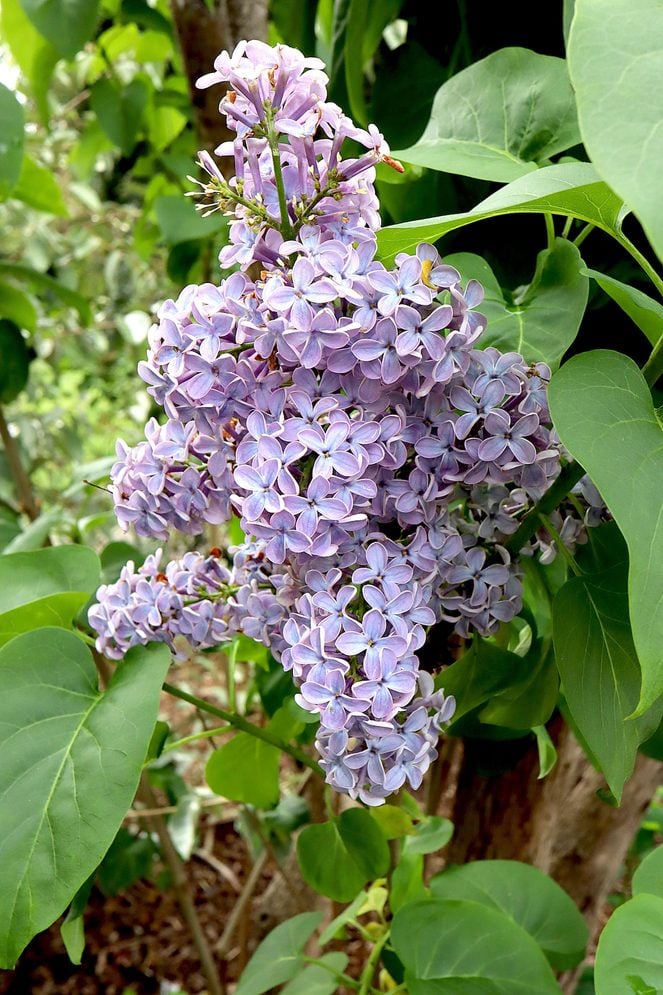
Wedgewood Blue grows 4 to 6 feet tall and produces beautiful flowers with a true blue interior and lavender around the edges of the petals. Best of all, it has an excellent fragrance.
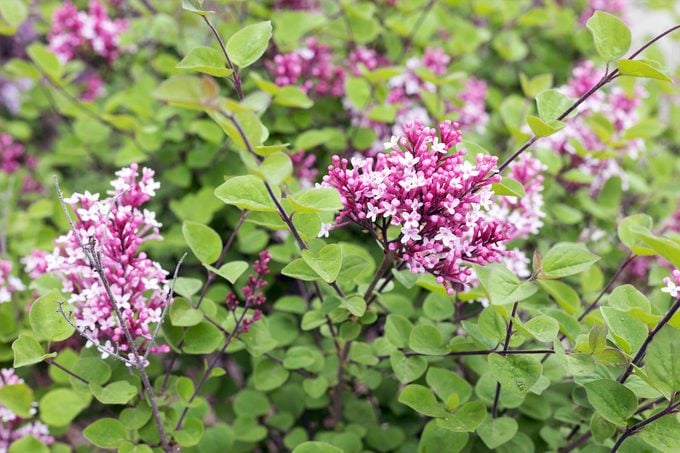
Tinkerbelle is a laterblooming selection with bright, single pink blooms that last up to four weeks. The upright shrub reaches up to 6 feet tall and can be trained into a small tree form.
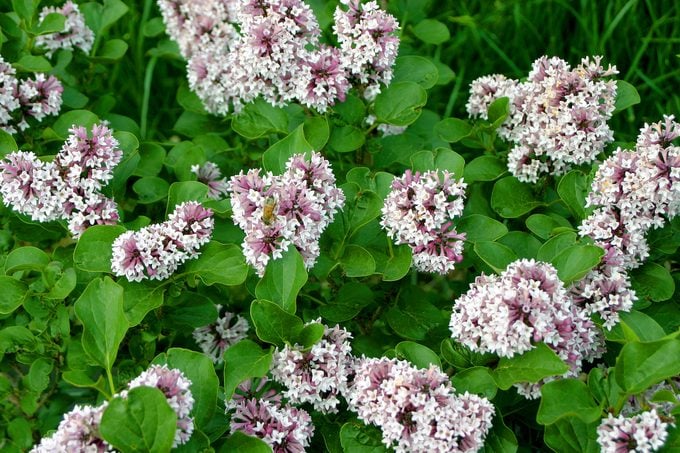
The smallest dwarf cultivar, Baby Kim has a mature size of just 2 to 3 feet tall and produces small, fragrant dark purple flowers that won’t fade over time.
Next, learn why you should add lilac vine to backyard flower gardens.
About the Experts
Melissa Finley is the Thain curator of woody plants at New York Botanical Garden. She earned a Master’s degree in plant pathology from the Pennsylvania State University.
Ruth Wendt is a garden committee chair at the Hulda Klager Lilac Gardens, a National Historic Site located north of Portland, Oregon. The Gardens and historic buildings are maintained by the Hulda Klager Lilac Society, a nonprofit volunteer organization.
Sources
- Hulda Klager Lilac Gardens
- National Garden Bureau
- First Editions Plants – Pinktini
- Monrovia – Betsy Ross
- Monrovia – Old Glory
- Jung Seed – Lilac Sunday
- Proven Winners – Scentara
- Spring Hill Nursery – Josee
- Hope Springs Nursery – Colby’s Wishing Star
- Proven Winners – Bloomerang Dark Purple
- University of Minnesota – Palibin
- Monrovia – Wedgewood Blue
- NVK Nurseries – Tinkerbelle
- Proven Winners – Baby Kim
Why Trust Us?
For nearly 30 years, Birds & Blooms, a Trusted Media Brand, has been inspiring readers to have a lifelong love of birding, gardening and nature. We are the #1 bird and garden magazine in North America and a trusted online resource for over 15 million outdoor enthusiasts annually. Our library of thousands of informative articles and how-tos has been written by trusted journalists and fact-checked by bird and garden experts for accuracy. In addition to our staff of experienced gardeners and bird-watchers, we hire individuals who have years of education and hands-on experience with birding, bird feeding, gardening, butterflies, bugs and more. Learn more about Birds & Blooms, our field editor program, and our submission guidelines.






















